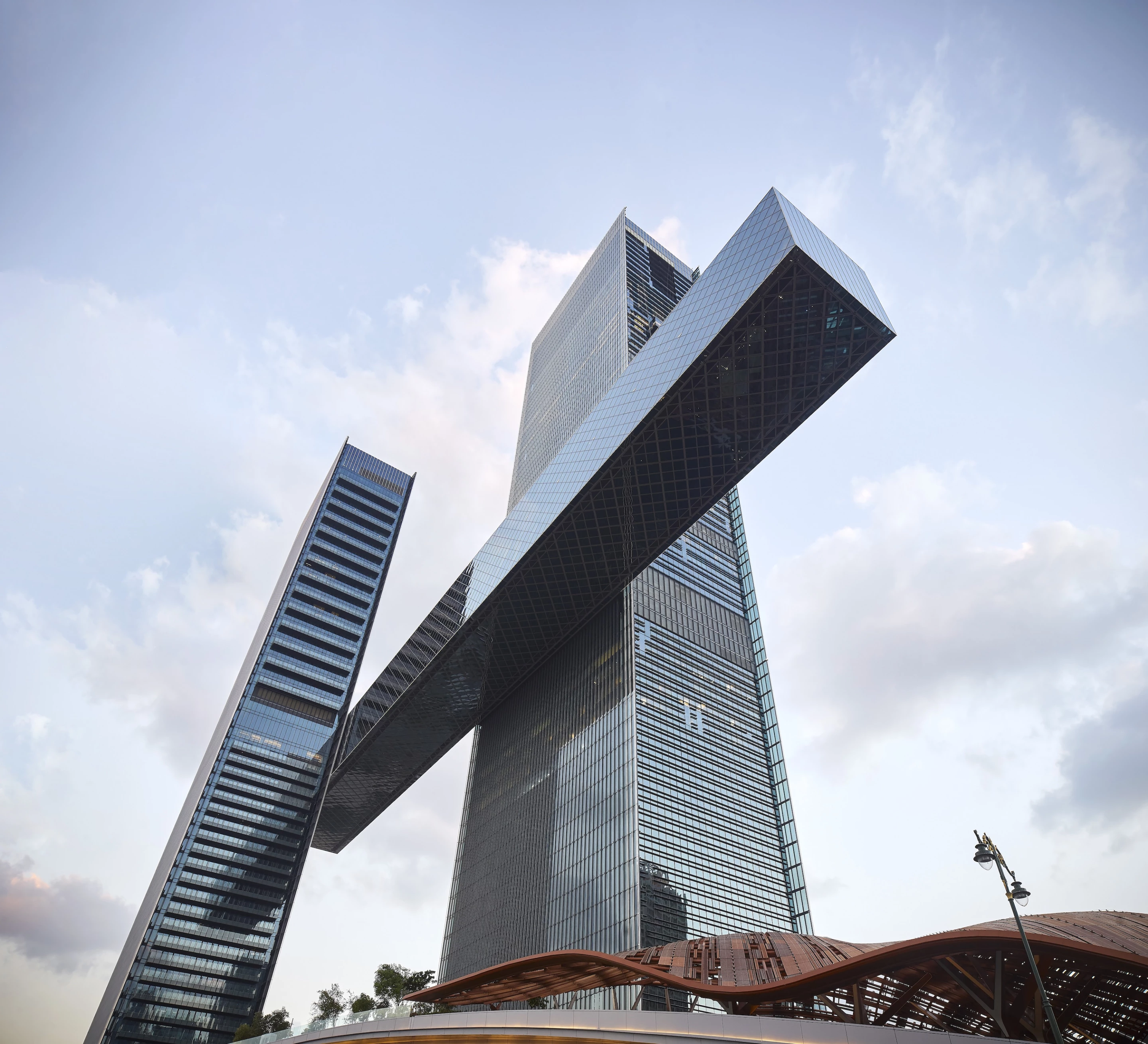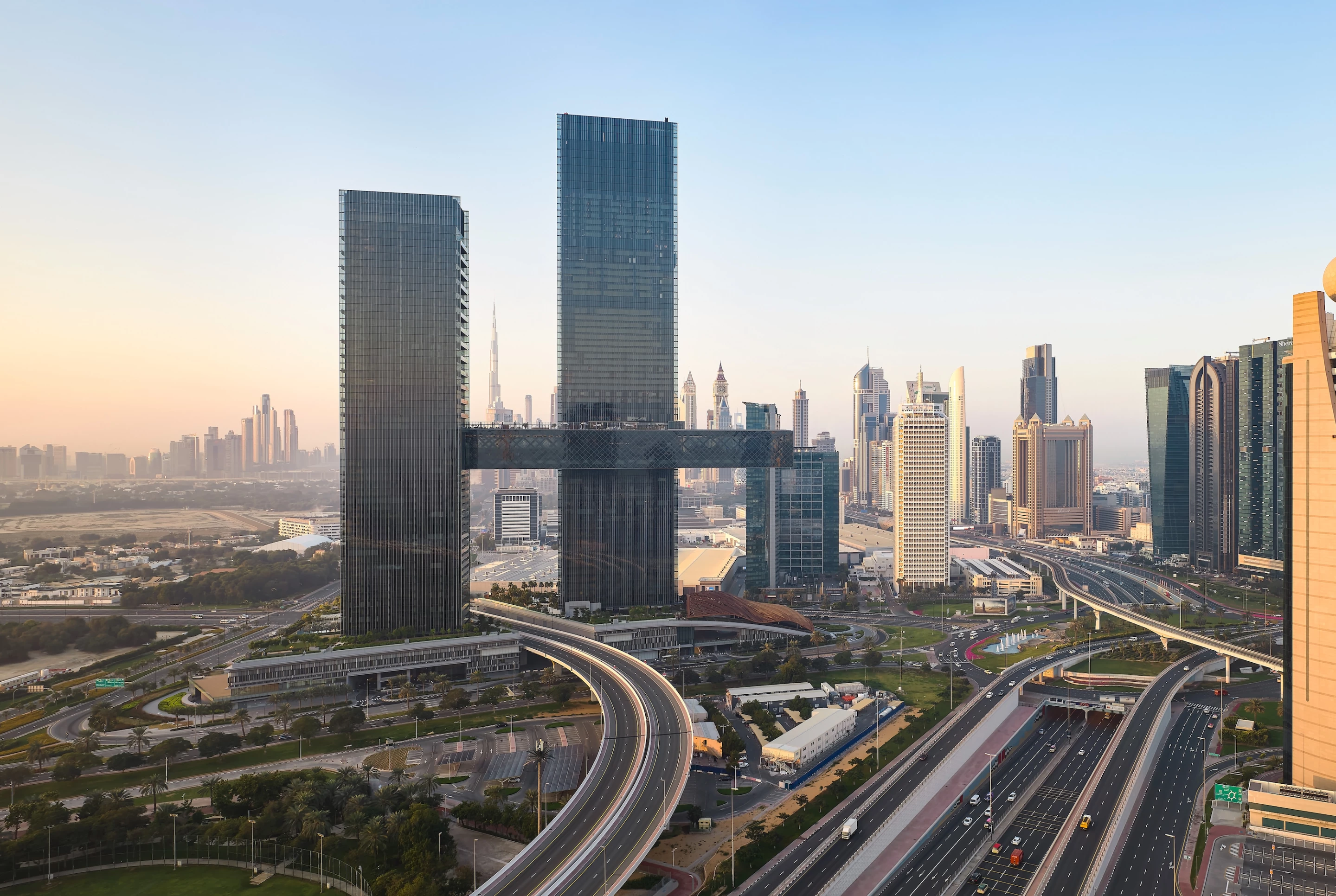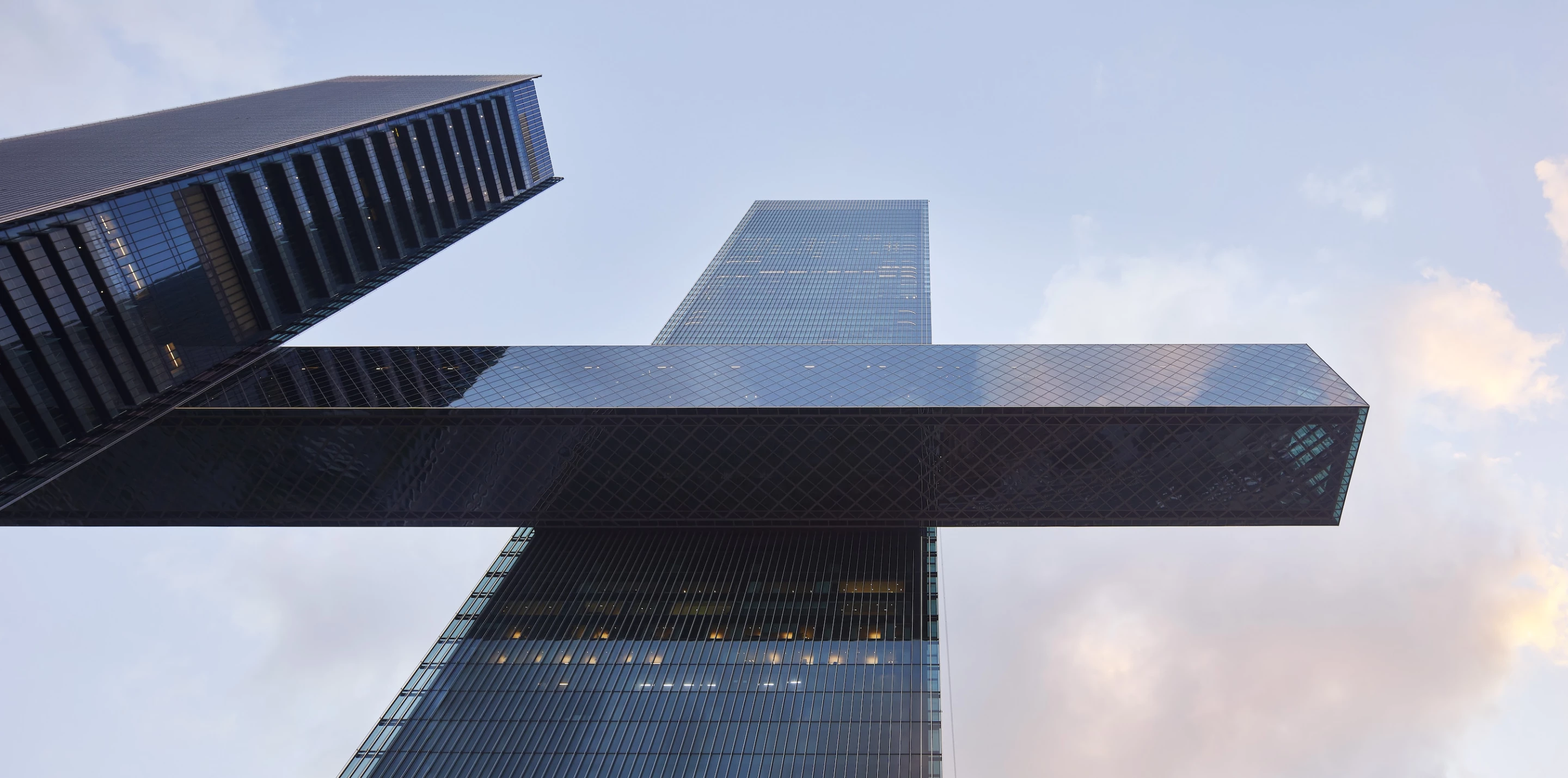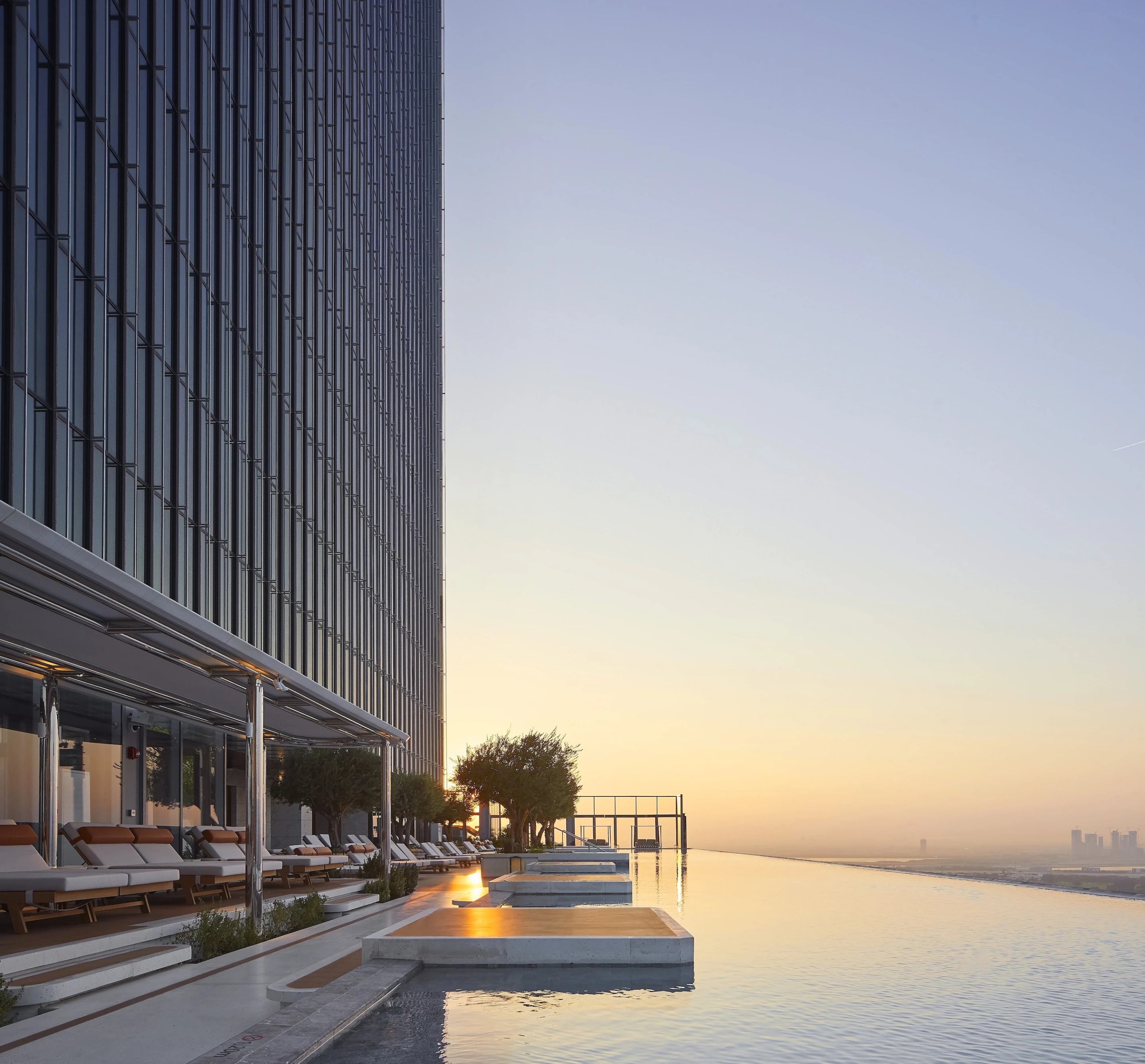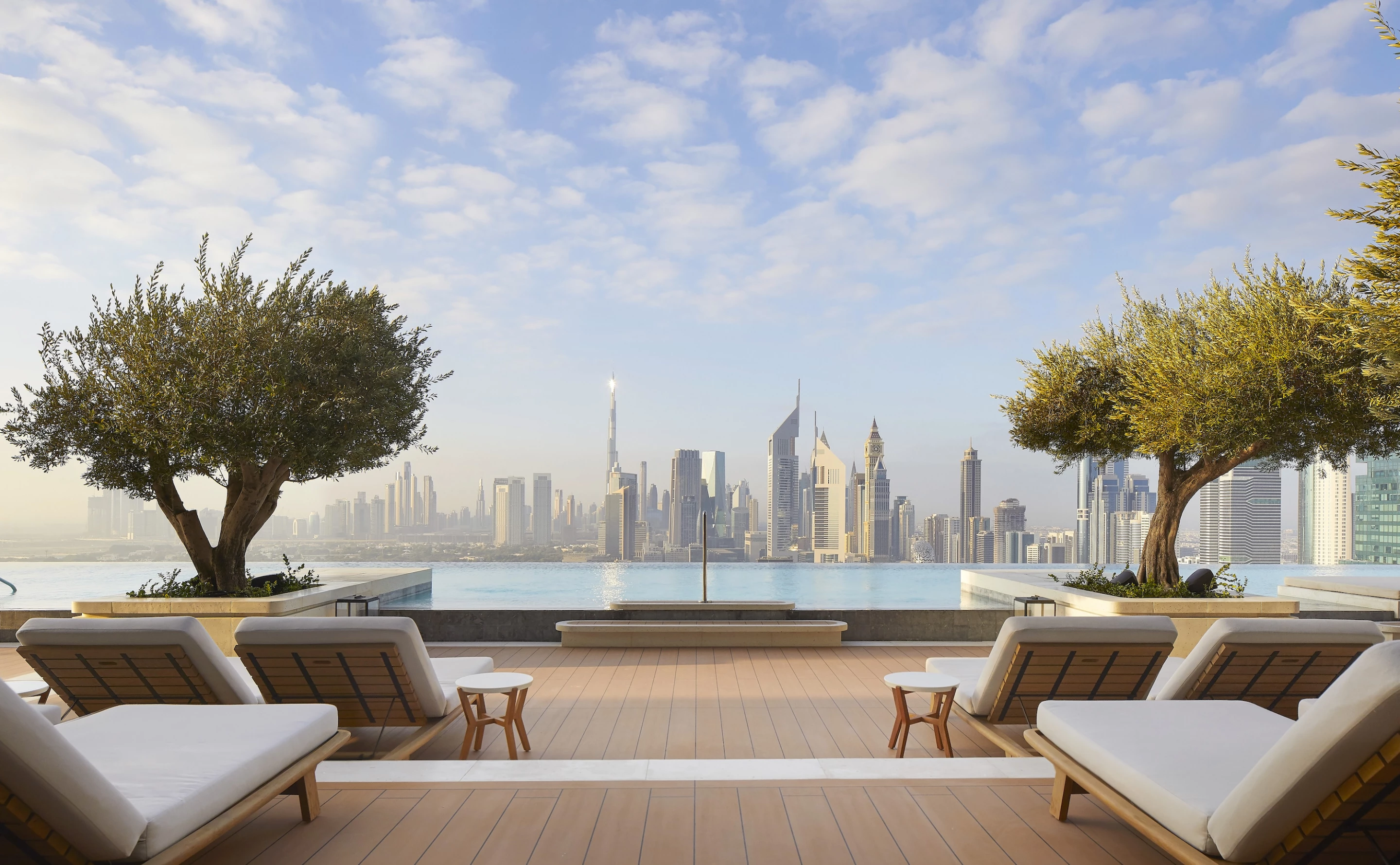Dubai is full of eye-catching skyscrapers but the newly completed One Za'abeel, by Japan's Nikken Sekkei, is sure to stand out even there. The project takes the form of two adjacent towers which support a horizontal bridge section that forms the world's longest cantilever.
One Za'abeel's two skyscrapers rise to a height of 235 m (770 ft) and 305 m (1,000 ft), respectively, and contain residential space, office space, and a hotel between them. They're both situated on top of a podium building with a green roof.
The project is defined by that horizontal bridge section, named the Link, which is anchored to both towers at a height of 100 m (328 ft) above a busy highway. It measures 230 m (754 ft) in length while the cantilevering section itself (i.e. the part that juts out) measures 66 m (216 ft). The Link is topped by an infinity swimming pool and viewing points, with views of the Burj Khalifa, the world's tallest building. Its interior has more viewing points, plus restaurants and lounge areas, and it serves as a bridge to access each building.
Naturally, realizing the project was a real engineering challenge. According to engineer WSP, the two skyscrapers were actually purposefully built with a very slight lean to them, so that when the Link was welded into place, its additional weight gradually returned the towers to a straight upright position. It was raised into place by construction firm Mace using a hydraulic lifting system that included 24 jacks.
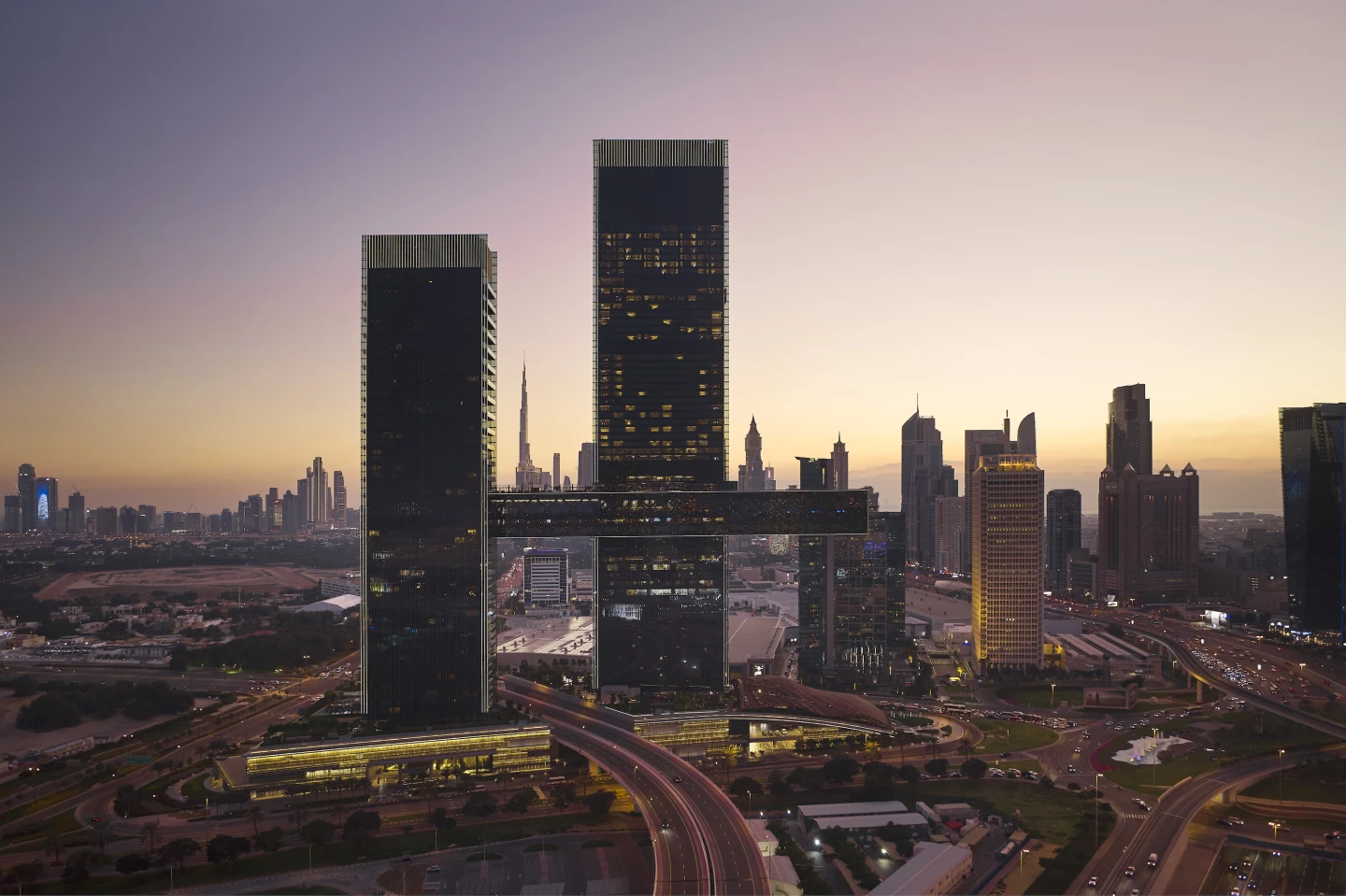
"The Link's 66-meter cantilever is now the world's longest cantilever, providing visitors with the illusion of floating in mid-air," explained Nikken Sekkei. "The Link has been created using a robust outer tubular structure system with its main steel members arranged in a diamond grid pattern along four sides in order to minimize torsion while yielding a contiguous, column-free interior space.
"The construction featured one of the heaviest recorded lifts in the region when the first section of the Link, weighing approximately 8,500 tonnes [roughly 9,370 US tons], was lifted into place 100 meters above ground, over a 12 day period. The remaining cantilever tip, weighing 900 tonnes [992 US tons], was then hoisted and attached during a second four-day procedure. The Link's connective position between the two towers also increases safety and suppresses wind-driven sway, a frequent issue with tall buildings."
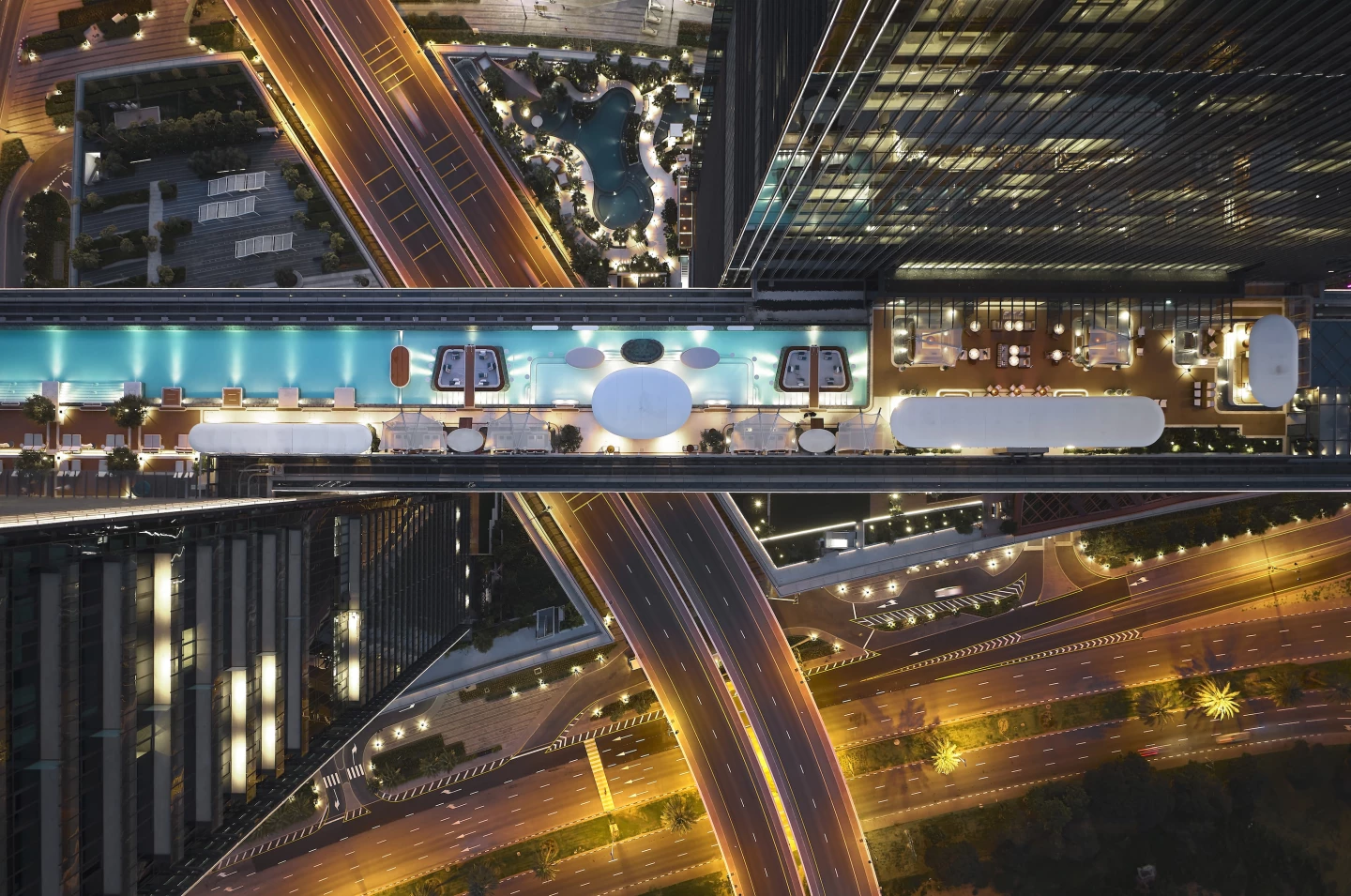
One Za'abeel is not the first skyscraper to incorporate a horizontal section, and follows the equally impressive Raffles City Chongqing and Marina Bay Sands, both of which were designed by Moshe Safdie. The project is also slated for the LEED Gold green building certification, though we've no further word on its sustainability at this stage.
Source: Nikken Sekkei

